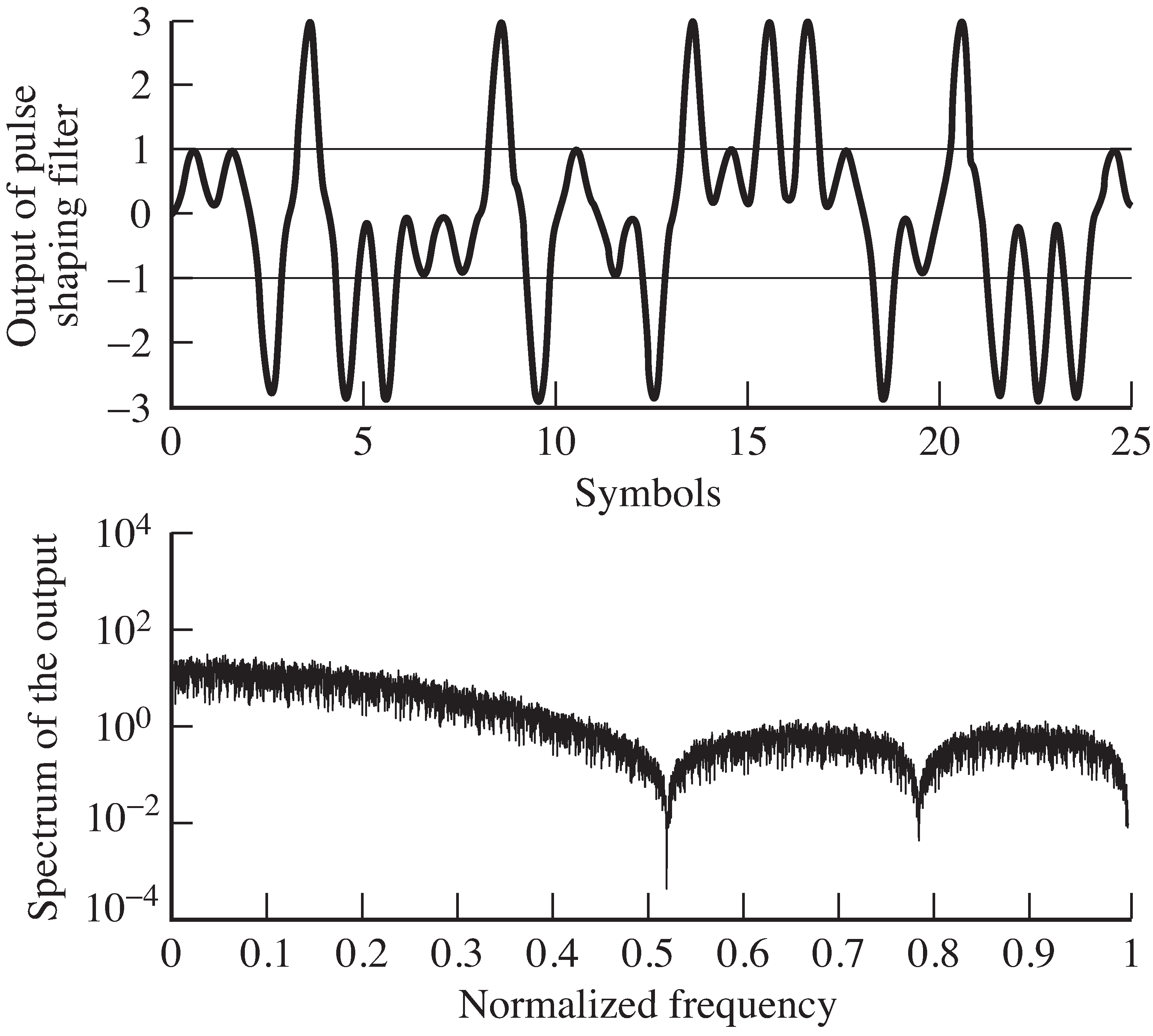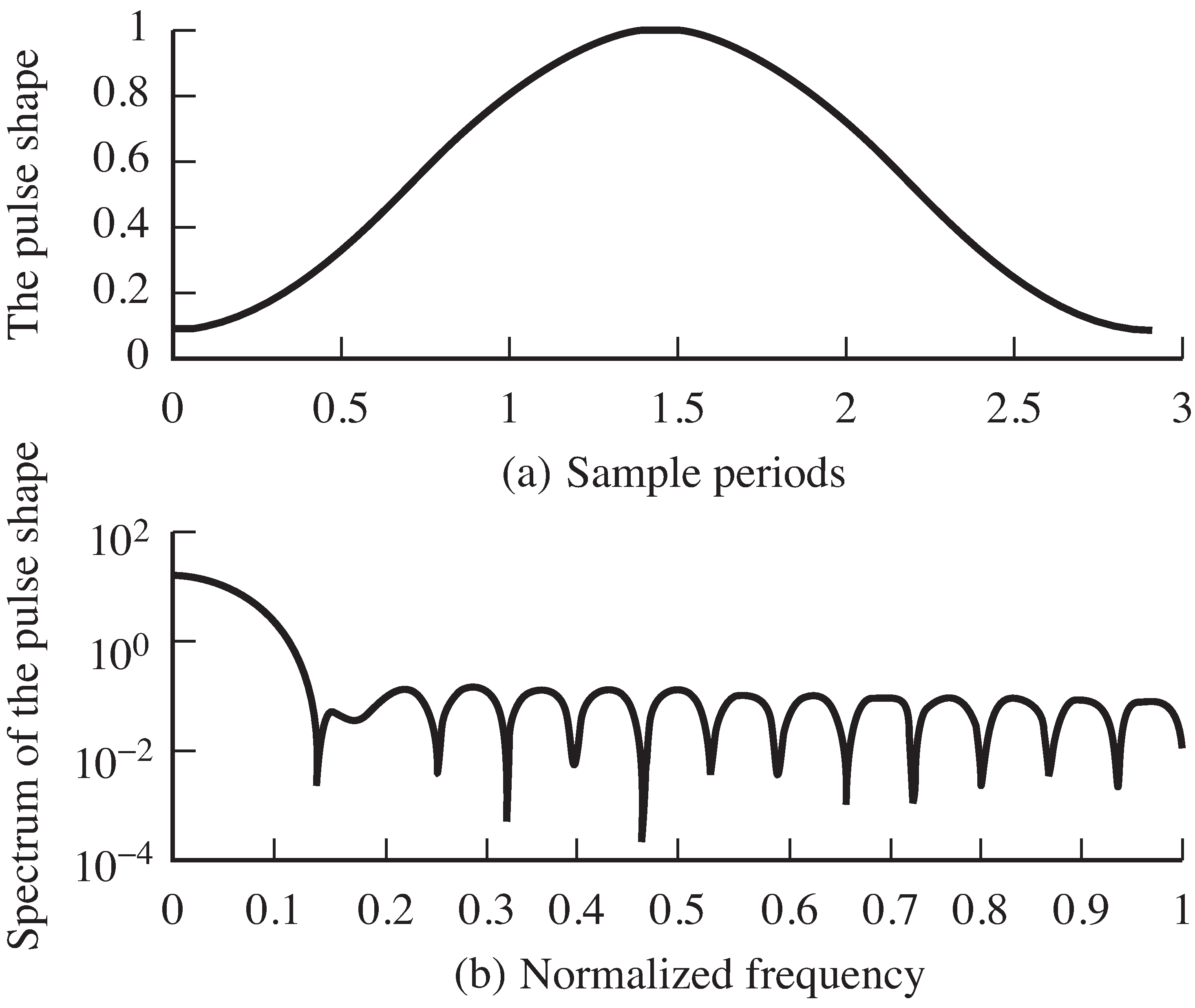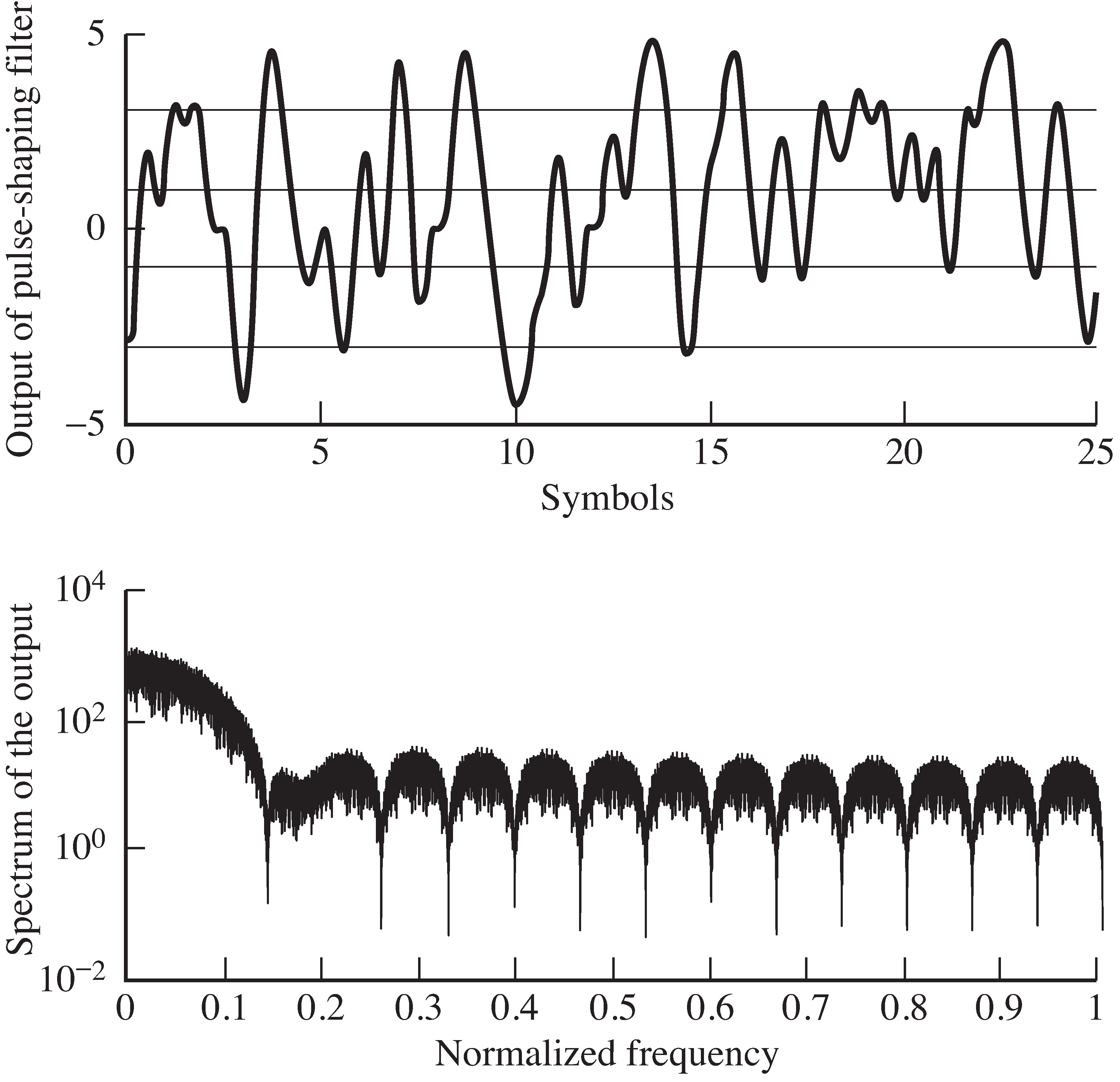| << Chapter < Page | Chapter >> Page > |
The spectrum of the output
x is plotted in
the bottom of
[link] .
As expected from the previous discussion, the spectrum
has the same contour as the spectrum of the
individual pulse shape in
[link] .

There are two situations when adjacent symbols may interfere with each other: when the pulse shapeis wider than a single symbol interval , and when there is a nonunity channelthat “smears” nearby pulses, causing them to overlap. Both of these situations are called intersymbol interference (ISI). Only the first kind of ISI will be considered in this chapter; the second kind ispostponed until Chapter [link] . Before tackling the general setup,this section provides an instructive example.
[ISI Caused by an Overly Wide Pulse Shape]
Suppose that the pulse shape in
pulsespec.m is stretched so that its width is
.
This triple-wide Hamming pulse shape is shown in
[link] , along with its spectrum.
Observe that the spectrum has (roughly) one-third the null-to-null bandwidthof the single-symbol wide Hamming pulse.
Since the width of the spectrum of the transmittedsignal is dictated by the width of the spectrum of the
pulse, this pulse shape is three times as parsimoniousin its use of bandwidth. More FDM users can be
active at the same time.
As might be expected, this boon has a price. [link] shows the output of the pulse shaping filter over a time of about 25 symbols. There is no longer a clear separationof the pulse corresponding to one data point from the pulses of its neighbors. The transmission is correspondinglyharder to properly decode. If the ISI caused by the overly wide pulse shape is too severe,symbol errors may occur.


Thus, there is a tradeoff. Wider pulse shapes can occupy less bandwidth, which is always a good thing. On the otherhand, a pulse shape like the Hamming blip does not need to be very many times wider before it becomes impossibleto decipher the data because the ISI has become too severe. How much wider can it be without causing symbol errors?The next section provides a way of picturing ISI that answersthis question. Subsequent sections discuss thepractical issue of how such ISI can be prevented by a better choice of pulse shape.Yes, there are good pulse shapes that are wider than .
Modify
pulsespec.m to examine what happens when
Hamming pulse shapes of width
,
, and
are used.
What is the bandwidth of the resulting transmitted signals?Do you think it is possible to recover the message from
the received signals? Explain.

Notification Switch
Would you like to follow the 'Software receiver design' conversation and receive update notifications?